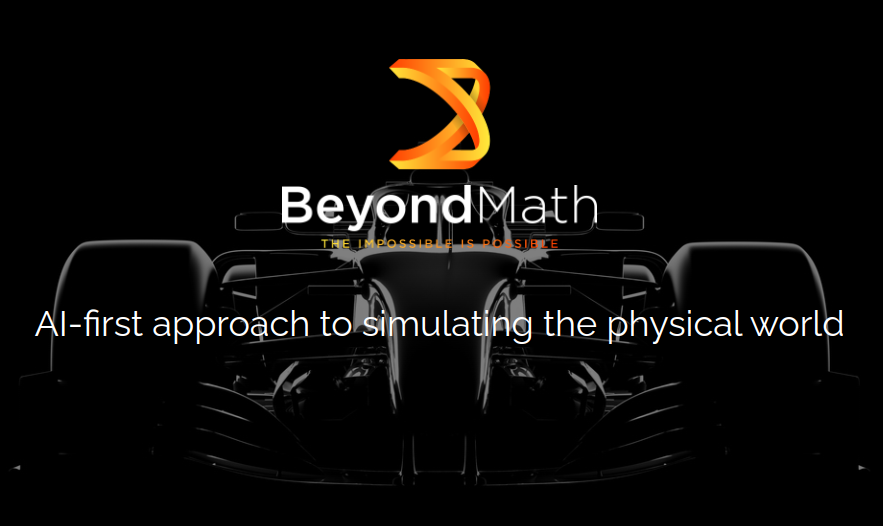 AI
AI
 AI
AI
 AI
AI
Artificial intelligence startup BeyondMath Ltd. said today it has raised $8.5 million in a seed funding round to train its foundational large language models on physics equations, as part of its mission to transform engineering processes through more advanced simulations.
Today’s round was led by UP.Partners and saw participation from Insight Partners and InMotion Ventures. The funds will be used to commercialize its AI-powered multiphysics simulation platform, which can accelerate engineering iterations by up to 1,000 times, the startup claims.
According to BeyondMath, it’s pioneering nothing less than a “seismic shift in simulation of complex physician phenomena essential for designing everything,” including vehicles, aircraft, lithium-ion batteries and the infrastructure of data centers.
To do this, it has set about training its foundational transformer models – the same kind of model that underpins ChatGPT – on the “fundamental laws of the universe,” or in other words, a library of physics equations.
By training advanced AI models on physics, BeyondMath believes it can transform the engineering and design processes in dozens of industries, enabling teams to assess the performance of any new concept without the need to create a physical prototype or run supercomputing simulations.
The company says its platform optimizes the design process using a rapid physics simulation engine, which replaces the expensive conventional methods used in engineering today. It allows teams to incorporate real-world data into their simulations, ensuring extremely accurate and reliable results when testing almost any concept, the startup promises.
To showcase the viability of its technology, BeyondMath teamed up with an unnamed Formula One racing team to help optimize the aerodynamics of its race cars. Its model is trained on thousands of physics equations, and can be used as a substitute for supercomputers, helping to optimize aerodynamic performance at an order of magnitude faster, and with substantially lower costs, the company said.
BeyondMath co-founder and Chief Executive Alan Patterson told Sifted in an interview last year that its algorithms can help Formula One teams to evaluate design configurations in a matter of minutes. “It would normally take them one day per iteration,” he pointed out. “Being able to do it so rapidly is a massive advantage.”
Ultimately, BeyondMath’s ambitions go far beyond the F1 racing world. Patterson believes that there’s no reason why AI can’t help to advance our understanding of physics itself, and perhaps even one day come up with a “theory of everything” that helps to unify our theories of general relativity and quantum mechanics – one of the major unsolved problems of physics. That’s something that not even Albert Einstein could crack, despite spending decades trying.
To power such a fantastical AI system, BeyondMath said it’s reliant on Nvidia Corp.’s most powerful graphics processing units. It claims to have been one of the first companies in the world to adopt an Nvidia DGX H200 AI system, which was used to train its physics solver algorithms at industrial scale.
“The Nvidia DGX H200 is a game-changer for AI-driven simulation,” Patterson said. “With its robust computing power, we’re equipped to push the boundaries of what is possible in physics-based engineering.”
Holger Mueller of Constellation Research Inc. said BeyondMath is taking advantage of the less understood fact that generative AI is just as good at understanding math as it is at language. “It’s a powerful use case and the prize is potentially very big, as it promises to apply the rules of physics to create models that can accelerate research and development processes far faster, and with lower costs, than is now possible,” he said.
Perhaps the biggest benefit is that BeyondScale is able to democratize supercomputer-like design capabilities and make them available to almost every company. Patterson explained that existing state-of-the-art physics simulation tools must be powered by $50 million supercomputers and spend days crunching data. As a result, only the richest companies can afford to use them.
“Our platform employs cutting-edge AI trained to decipher the core equations of the physical world, delivering a monumental leap in speed and cost,” the CEO insisted. “With our innovative AI platform, we anticipate saving billions for our customers, streamlining industry workflows, and significantly cutting unnecessary carbon emissions.”
Support our mission to keep content open and free by engaging with theCUBE community. Join theCUBE’s Alumni Trust Network, where technology leaders connect, share intelligence and create opportunities.
Founded by tech visionaries John Furrier and Dave Vellante, SiliconANGLE Media has built a dynamic ecosystem of industry-leading digital media brands that reach 15+ million elite tech professionals. Our new proprietary theCUBE AI Video Cloud is breaking ground in audience interaction, leveraging theCUBEai.com neural network to help technology companies make data-driven decisions and stay at the forefront of industry conversations.